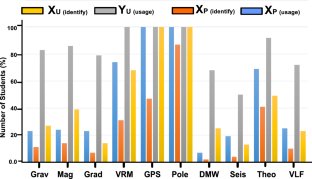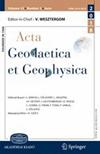Geophysical test site in teaching, researching, field-based exercises and solving real-life work situations: a case study
Abstract
A geophysical test site (GTS) is an all-important engine room in geophysics for pedagogical field-based exercises because it is a fundamental bridge builder that links the hypothetical information given in the classroom and the real problem-solving research. This paper examines the ability of 163 undergraduate and 84 postgraduate students in the identification and use of some selected geophysical equipment and geophysical data processing software to address the general decline in literacy, technical efficiency and field skills. The students' unfamiliarity with simple geophysical data processing software and geophysical equipment, which has left a question mark on the quality of national geophysical education. In addressing this, the authors applied empirical data using a diagnostic questionnaire and field-based exercise. The analysis shows that more than 70% of undergraduate and 50% of postgraduate students lack the requisite university skills to face real problem-solving in the industrial sectors. To standardize geophysical education, this study identified the establishment of GTS as one of the major factors that influence teaching, learning outcomes and research development. Student perception feedback, unemployable graduates and educational implications of GTSs were extensively examined to link up teaching and research in geophysics. Consequently, conclusions and recommendations were drawn to bridge the missing links and the shortcomings of the theoretical knowledge-based emphasized in the classroom with the real problem-solving research that will provide geophysics trainees and graduates with the kind of lifetime requisite and professional skills required to be successful in their future tasks.


 求助内容:
求助内容: 应助结果提醒方式:
应助结果提醒方式:


